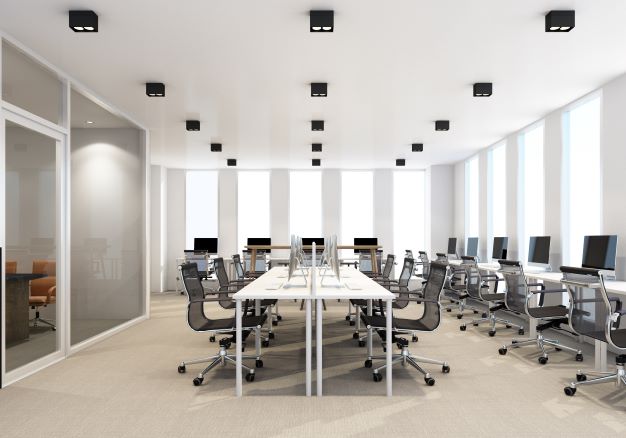Blog
Pointers to Consider When Cleaning Open Offices
Office cleaning is
not as simple and easy as it sounds. There are different office setups that
also require different forms of cleaning. Out of all office setups, there are
higher risks of bacteria and germs to spread in open offices.
What are Open Offices?
Open office settings
typically feature less interior walls, fewer private offices, benching system
instead of cubicles with low walls, and selection of meeting rooms and
workspaces where employees can work from. The designs of workstations usually
include unassigned seating in most cases.
It is possible to
assign more employees on floors with open offices unlike floors with cubicles.
Open offices make it easier to create an improved sense of community and also
foster creativity, innovation, collaboration, and cooperation.
Even though open
offices offer a long list of benefits, these settings require more frequent
cleanings and higher level of maintenance to sustain the flexible environment
of the office.
Collaborative Spaces
All open office
spaces have meeting rooms meant to offer more privacy as needed. Such rooms get
heavier traffic. These also have more surfaces and additional equipment where
germs and bacteria can accumulate.
It is important to
be extra careful to determine and label these spots due to frequent use and
could be overlooked easily in environments where area ownership is unclear.
Commercial cleaning
experts can accurately capture the amount of cleaning required in conference
and meeting rooms as well as shared spaces to properly manage these hot spots.
Limited Barriers
Employee
workstations in open offices are all located in one area instead of private
offices or individual cubicles so physical barriers are not required.
Although removing
these barriers can encourage teamwork and improve communication, this can also
eliminate the obstacles that bacteria and germs must get through to spread.
If you and your
colleagues touch the same objects and are in close proximity to each other, it
makes it easier for pathogens such as bacteria and viruses to be transmitted.
Frequency of Cleaning
Among the challenges
that affect the development of a cleaning plan is the frequency of cleaning the
space because of the increased number of workers as well as the additional
spaces that they use.
Coworkers don’t just
collaborate more because they also socialize more often, share technology and
facilities, thus facing more hygiene risks than ever before.
Higher Employee Count
Additional employees
will be brought it to use the space more efficiently, which means that desk
sharing will also be more common.
More employees
working in the shared spaces that have fewer barriers will lead to more
high-touch points and more chances that bacteria and germs will be present and
spread.
The best and most
effective office cleaning routines will consider all these factors to have a
good understanding of the scope of work required and to choose the right type
of product for cleaning the work spaces.
Courtesy Building Services
Inc offers a variety of specialized cleaning services especially tailored to
all sizes and types of office settings.
